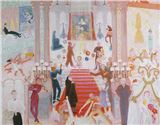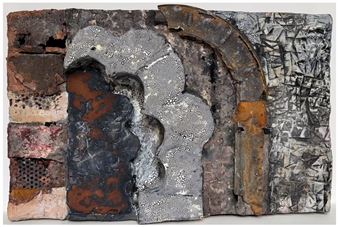Sylvain Lessard: Monuments
Before 1990, hundreds of вҖңspomeniksвҖқ once stood across the Balkan countryside. Built during the 1960s and 70s, and intended as non-partisan monuments to tragic events that occurred during the Second World War, their вҖҳneutralвҖҷ abstract designs aligned with the optimism and futuristic aesthetics of the times. When civil war overtook Yugoslavia in the 1990s, the spomeniks became targets of ire, and were vandalized or dismantled. At the time, the structures were seen as painful symbols of the national unity that failed to materialize after World War II.
While conducting research at the Canadian Centre for Architecture, artist and architect Sylvain Lessard discovered the spomeniks through the work of Antwerp-based photographer Jan Kempenaers, who, in 2006, started documenting those that remain. вҖңI learned about Soviet war monuments in classes, but IвҖҷd never heard of these,вҖқ he says. вҖңI liked how they were inspired by dreams of unity and how the architects approached them as artworks.вҖқ
When he first started painting, Lessard wanted to emulate the hard-edged abstraction of Guido Molinari, whose best-known works are composed of large blocks of colour. вҖңThey look easy to paint, but itвҖҷs really quite difficult,вҖқ says Lessard. вҖңYou have to be very aware of how colours interact with each other.вҖқ

Recommended for you
Before 1990, hundreds of вҖңspomeniksвҖқ once stood across the Balkan countryside. Built during the 1960s and 70s, and intended as non-partisan monuments to tragic events that occurred during the Second World War, their вҖҳneutralвҖҷ abstract designs aligned with the optimism and futuristic aesthetics of the times. When civil war overtook Yugoslavia in the 1990s, the spomeniks became targets of ire, and were vandalized or dismantled. At the time, the structures were seen as painful symbols of the national unity that failed to materialize after World War II.
While conducting research at the Canadian Centre for Architecture, artist and architect Sylvain Lessard discovered the spomeniks through the work of Antwerp-based photographer Jan Kempenaers, who, in 2006, started documenting those that remain. вҖңI learned about Soviet war monuments in classes, but IвҖҷd never heard of these,вҖқ he says. вҖңI liked how they were inspired by dreams of unity and how the architects approached them as artworks.вҖқ
When he first started painting, Lessard wanted to emulate the hard-edged abstraction of Guido Molinari, whose best-known works are composed of large blocks of colour. вҖңThey look easy to paint, but itвҖҷs really quite difficult,вҖқ says Lessard. вҖңYou have to be very aware of how colours interact with each other.вҖқ
















